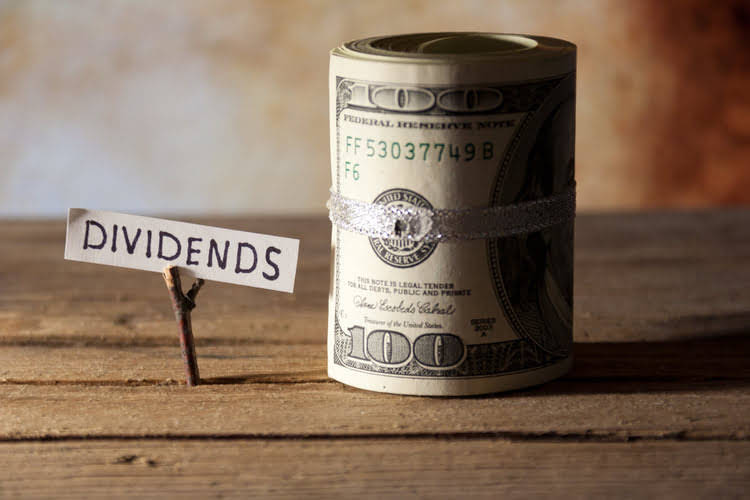Content

Thanks to cloud-based software, the days of jotting down your revenue and expenses in a physical ledger are over. These days, there areaffordable, cloud-based accounting servicesfor every size business.
- It is also used at audit time to see the impact of proposed audit adjustments.
- The U.S. Securities and Exchange Commission typically requires companies to submit an income statement as part of a regular performance report.
- Investors and lenders pay attention to the P&L statement, especially when comparing different periods to determine the long-term trajectory of the company.
- Your cost of goods sold includes the direct labor, materials and overhead expenses you’ve incurred to provide your goods or services.
The most important ratios use numbers from both the balance sheet and the income statement. These 2 documents are sometimes confused because they both have to do with how much money a company is making or losing. As indicated above, the difference lies in when revenues and expenditures are incurred and when the related cash transactions actually occur. On a personal level, one might compare this to using a credit card, where the dates of a purchase and a payment differ, or a debit card, where a purchase and a payment are recorded simultaneously. The Charles Schwab Corporation provides a full range of brokerage, banking and financial advisory services through its operating subsidiaries.
More Business Planning Topics
It also provides a company with valuable information about revenue, sales, and expenses. The first step in preparing an income statement is to choose the reporting period your report will cover. Businesses typically choose to report their income statement on an annual, quarterly or monthly basis. Publicly traded companies are required to prepare financial statements on a quarterly and annual basis, but small businesses aren’t as heavily regulated in their reporting. Creating monthly income statements can help you identify trends in your profits and expenditures over time. That information can help you make business decisions to make your company more efficient and profitable. The Income Statement is one of a company’s core financial statements that shows their profit and loss over a period of time.
Products might listed as shipped or received at the end of one year or the beginning of the next, depending on which will create the better figures. Companies with balance sheets that present the absolute debt level at the half year or year end, but are subject to seasonal debt inflation, may appear stronger financially than they actually are. If a bookkeeper doesn’t know if this was an asset or expense, they could assume it should be recorded as an asset under computer equipment because an iPad will last long term. However, since most businesses only capitalize or record things as assets if they exceed $5,000, this should have been coded as an expense and charged as a cost to that job. Many CEOs will only look at the income statement at the end of each month. Because the income statement tells them what they want to see – how much revenue they made and whether there was a profit – The Bottom Line. But the income statement doesn’t show the whole picture of their business’s profitability.
Investing Activities
Under US GAAP, unusual and/or infrequently occurring items, which are material, are presented separately within income from continuing operations. If a company buys a piece of machinery, the cash flow statement would reflect this activity as a cash outflow from investing activities because it used cash. If the company decided to sell off some investments from an investment portfolio, the proceeds from the sales would show up as a cash inflow from investing activities because it provided cash.
What are the 3 rules of accounting?
Take a look at the three main rules of accounting: Debit the receiver and credit the giver. Debit what comes in and credit what goes out. Debit expenses and losses, credit income and gains.
Cash flows provide more information about cash assets listed on a balance sheet and are related, but not equivalent, to net income shown on the income statement. But combined, they provide very powerful information for investors. And information is the investor’s best tool when it comes to investing wisely.
What Is Included in a Balance Sheet?
The income statement is also known as a profit and loss statement, statement of operation, statement of financial result or income, or earnings statement. Enter the total amount into the income statement as the selling and administrative expenses line item. Subtract the cost of goods sold total from the revenue total on your income statement. This calculation will give you the gross margin, or the gross amount earned from the sale of your goods and services.

To this day these reforms require publicly traded companies to regularly disclose certain details about their operations and financial position. One way to receive accurate numbers each month is through outsourcing your bookkeeping and accounting needs. Outsourced https://www.bookstime.com/ accounting services are experts and can provide reports that will help your business grow and make more money. At the beginning of the next fiscal year when Net Income is been posted to Retained Earnings, the income and expense accounts are «zeroed out» …
Calculate Your Net Income or Loss
This format may be acceptable for sole proprietors and very small businesses. However, most companies issue multi-step income statements, which break out cost of goods sold, gross profit, and operating expenses. More than one company, especially young and growing ones, have looked like superstars on their income statements, but have been forced to cease operations for lack of cash.

This account shall be used to report all interest expense accrued and charged to income during the period. This income statement accounts account shall be maintained by class of assets as accounted for in the property and equipment accounts.
What’s the Easiest Way to Prepare an Income Statement?
An income statement shows a business’s net income, profit margins, expenses and investment positions over each quarter of the fiscal year. The U.S. Securities and Exchange Commission typically requires companies to submit an income statement as part of a regular performance report. Companies may also use income statements to help them file taxes. At the top of the income statement is the total amount of money brought in from sales of products or services. It’s called “gross” because expenses have not been deducted from it yet. A balance sheet shows a snapshot of a company’s assets, liabilities and shareholders’ equity at the end of the reporting period. It does not show the flows into and out of the accounts during the period.
- They show you where a company’s money came from, where it went, and where it is now.
- The following summarizes and explains the items found in an income statement.
- Assets consist of cash, receivables, office furniture, equipment, prepaid expenses, etc.
- Your cash position is only temporarily low, but you can’t always explain that in the balance sheet.
- To this, additional gains were added and losses subtracted, including $257.6 million in income tax.
The cash flow statement also separates investments and financing transactions. These differences are designed to clarify the actual amount of cash available to the company. Balance sheets present important information about the financial strength of the company. They allow investors to calculate days of Working Capital, which shows how easily a company can handle changes in revenue while staying afloat. Companies should have at least 30 days of Working Capital, and financially strong companies have more than 180 days.
Calculate Cost of Goods Sold (COGS)
The Ascent is a Motley Fool service that rates and reviews essential products for your everyday money matters. Your company’s Balance Sheet will be longer and contain more accounts, though try to make your Chart of Accounts lean and mean. Also, the Assets section may be divided into Current Assets and Fixed Assets. These are discussed in our tutorial about the five Account Types in the Chart of Accounts. Our Trial Balance shown below looks a lot like our transaction list except the debits and credits for Cash have been totaled. We have no Retained Earnings because it is our first year in business.
Finance costs – costs of borrowing from various creditors (e.g., interest expenses, bank charges). Indirect expenses like utilities, bank fees, and rent are not included in COGS—we put those in a separate category. If you have found yourself struggling to find the time to create your own statement from scratch, a free invoice statement template is the perfect solution. Finally, we arrive at the net income , which is then divided by the weighted average shares outstanding to determine theEarnings Per Share . Gross Profit Gross profit is calculated by subtracting Cost of Goods Sold from Sales Revenue.
Balance sheet vs. income statement: What’s the difference?
Both are crucial for decision-makers, investors and financial institutions. It’s management’s opportunity to tell investors what the financial statements show and do not show, as well as important trends and risks that have shaped the past or are reasonably likely to shape the company’s future. A company’s balance sheet is set up like the basic accounting equation shown above. On the left side of the balance sheet, companies list their assets.
- They are reported separately because this way users can better predict future cash flows – irregular items most likely will not recur.
- Based on their analysis, they can come up with the best solutions to yield more profit.
- Income tax expense – sum of the amount of tax payable to tax authorities in the current reporting period (current tax liabilities/ tax payable) and the amount of deferred tax liabilities .
- This account shall be used to report all expenses incurred during and directly incident to inactive periods of vessels.
- This account shall be used to report all interest expense accrued and charged to income during the period.
- A balance sheet lists assets and liabilities of the organization as of a specific moment in time, i.e. as of a certain date.
However, most businesses use the multi-step income statement format, which shows operating expenses broken out into multiple line items for different types of expenses. You may want to group certain operating expenses on one line for simplicity’s sake. For example, your electric, gas, and sewer utility expense can be grouped as “Utilities.» This keeps your income statement from becoming too unwieldy. Subtract operating expenses from business income to see your net profit or loss. If revenues are higher than total business expenses, you’re making a profit. If your business expenses over the period being examined were higher than your income, the company has made a loss.
What is income statement?
An income statement is a financial statement that shows you the company’s income and expenditures. It also shows whether a company is making profit or loss for a given period. The income statement, along with balance sheet and cash flow statement, helps you understand the financial health of your business.

Interest income is the money companies make from keeping their cash in interest-bearing savings accounts, money market funds and the like. On the other hand, interest expense is the money companies paid in interest for money they borrow. Some income statements show interest income and interest expense separately. The interest income and expense are then added or subtracted from the operating profits to arrive at operating profit before income tax.
